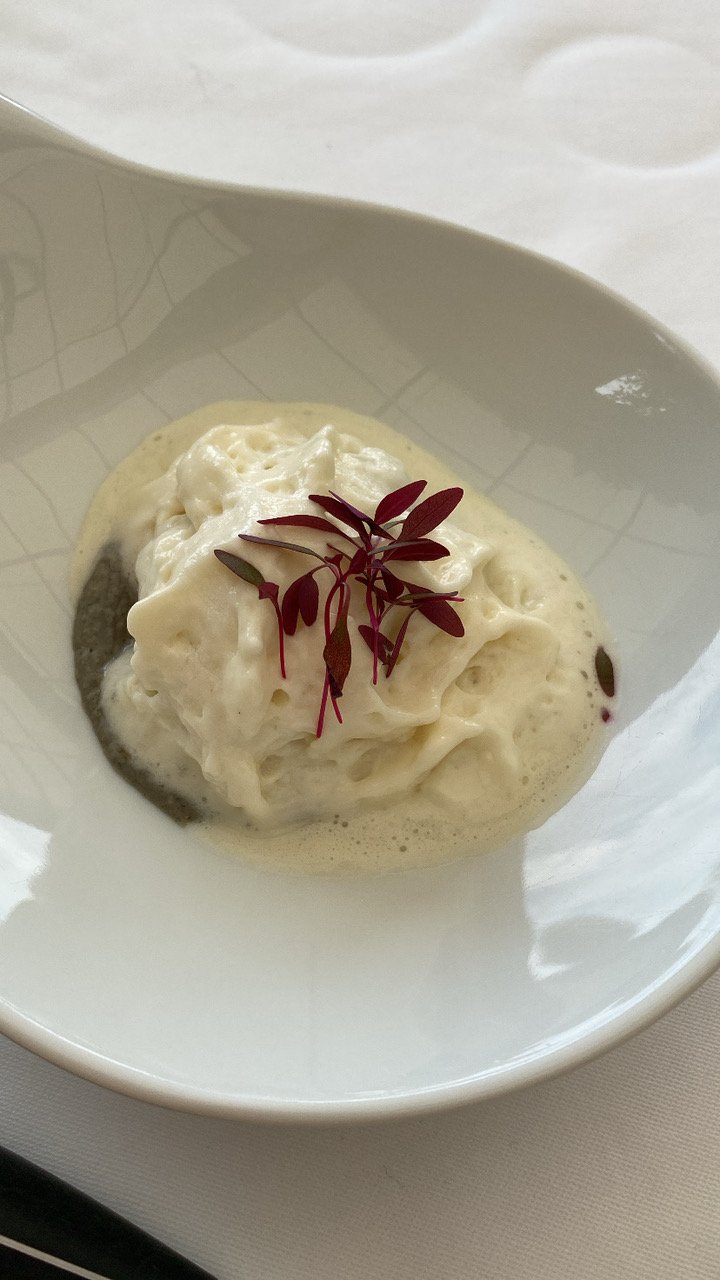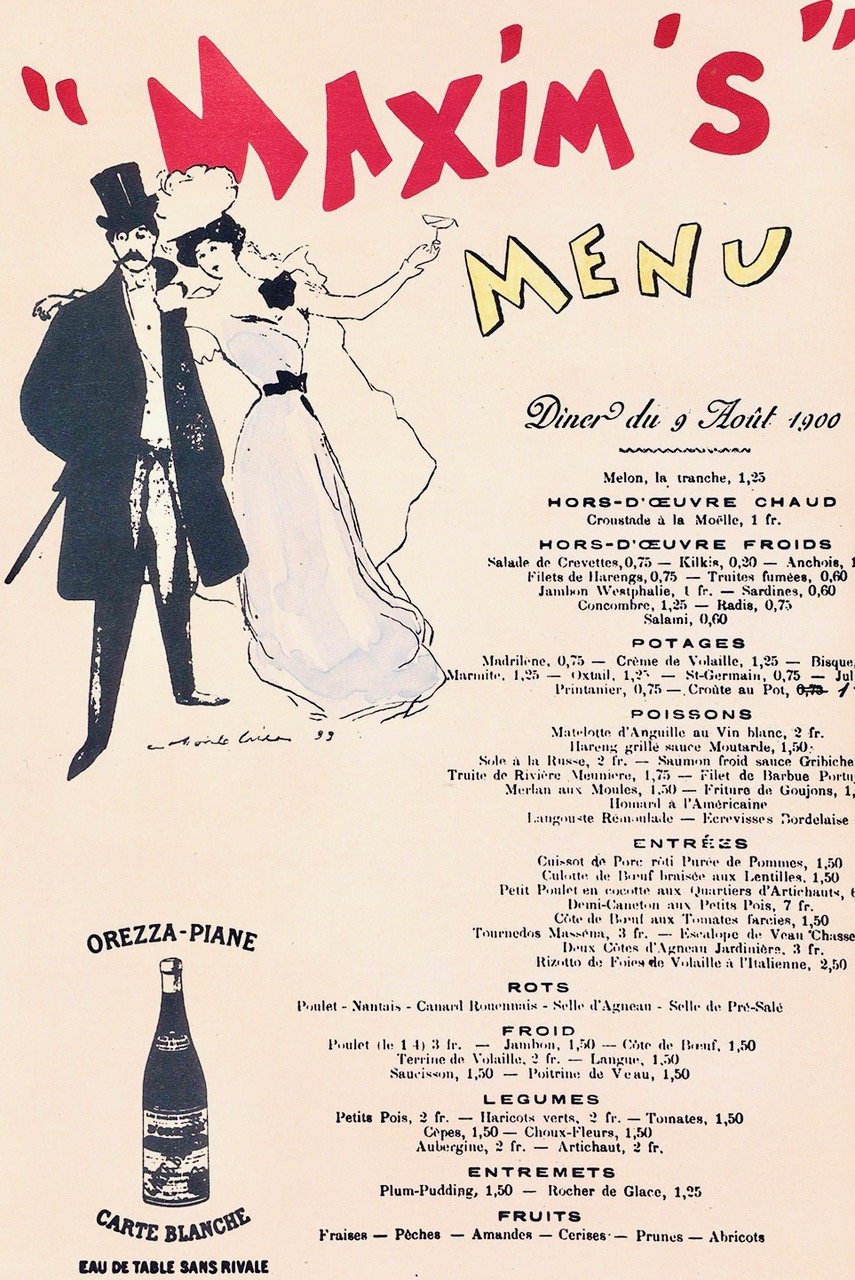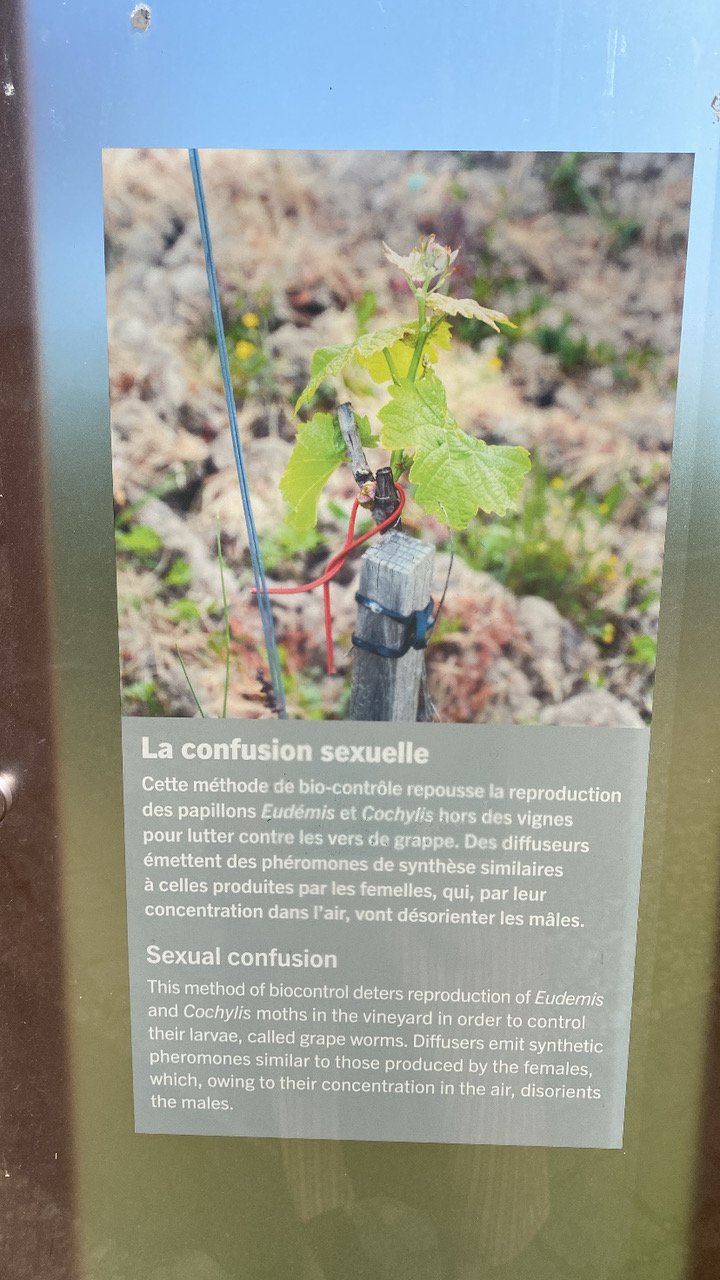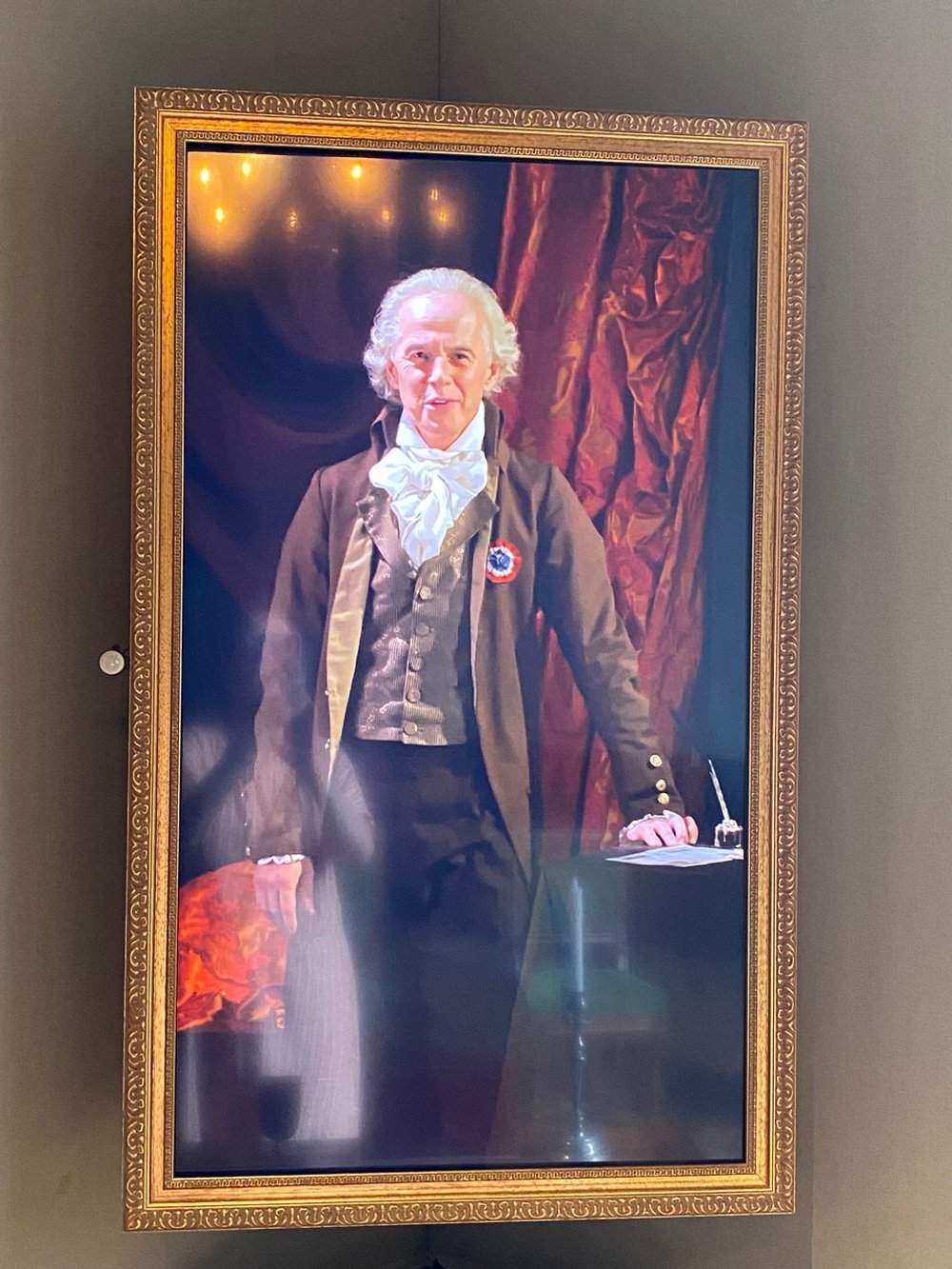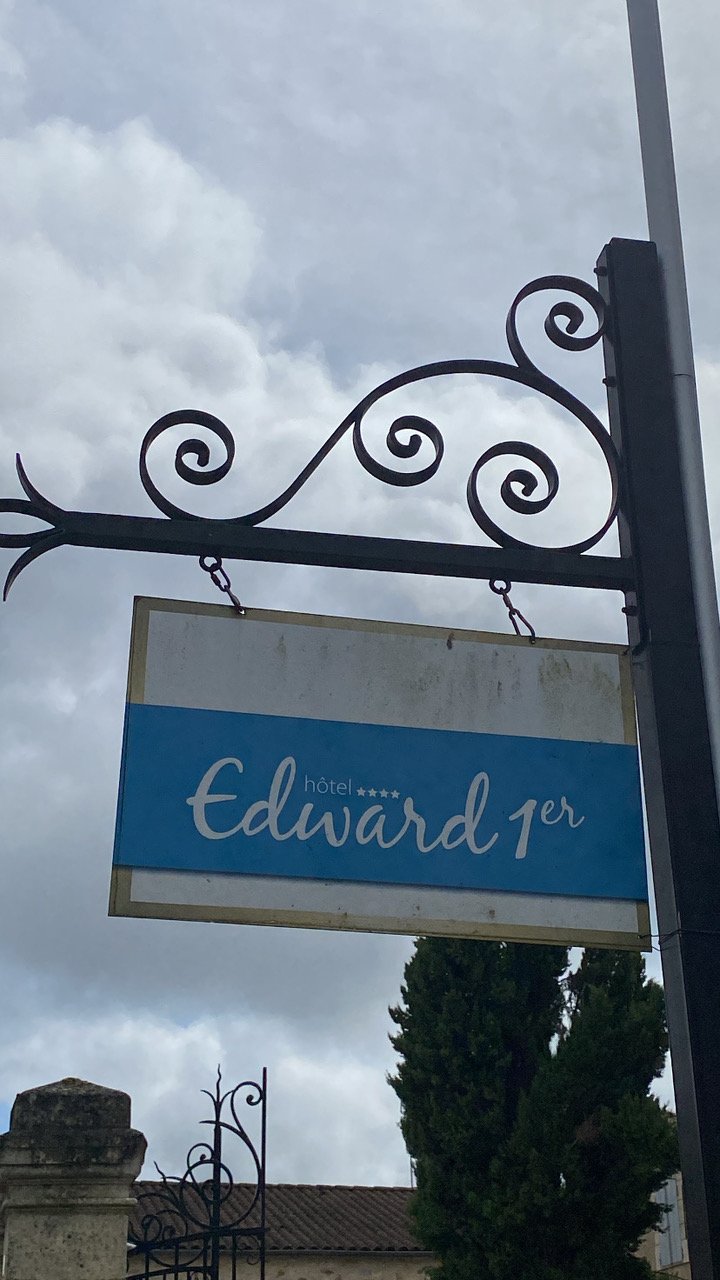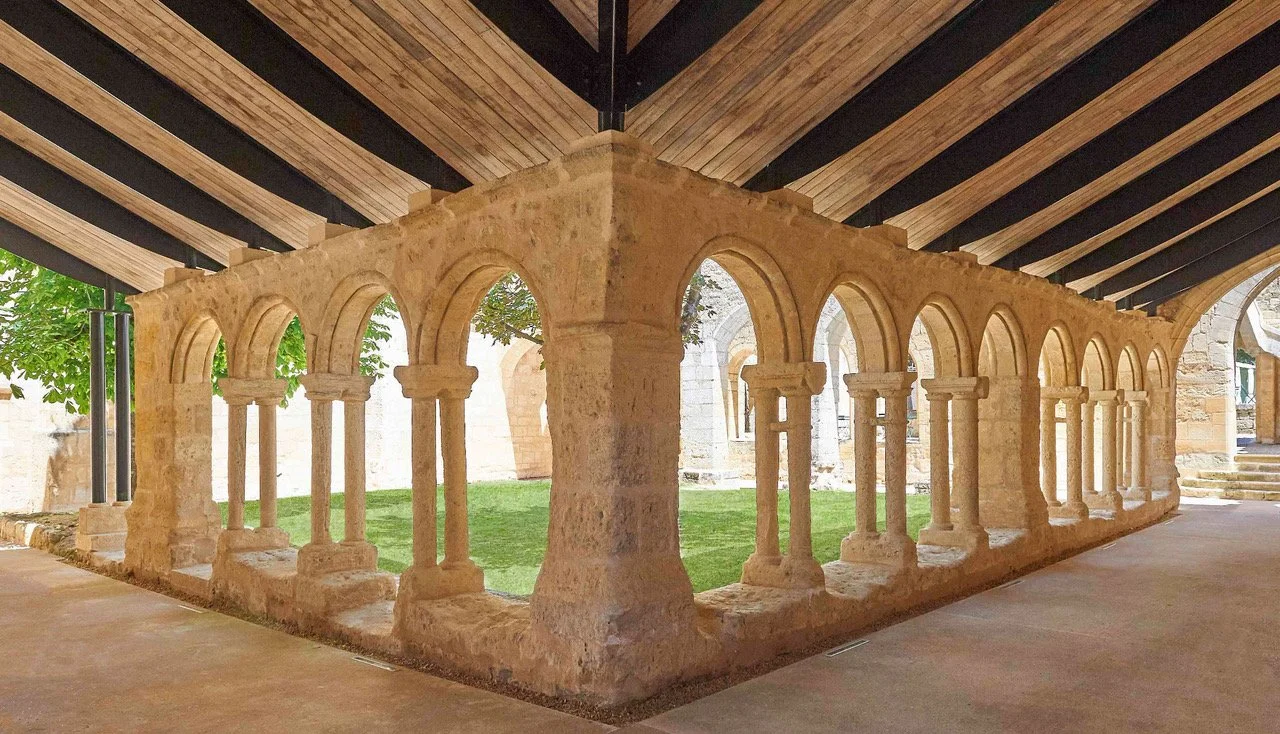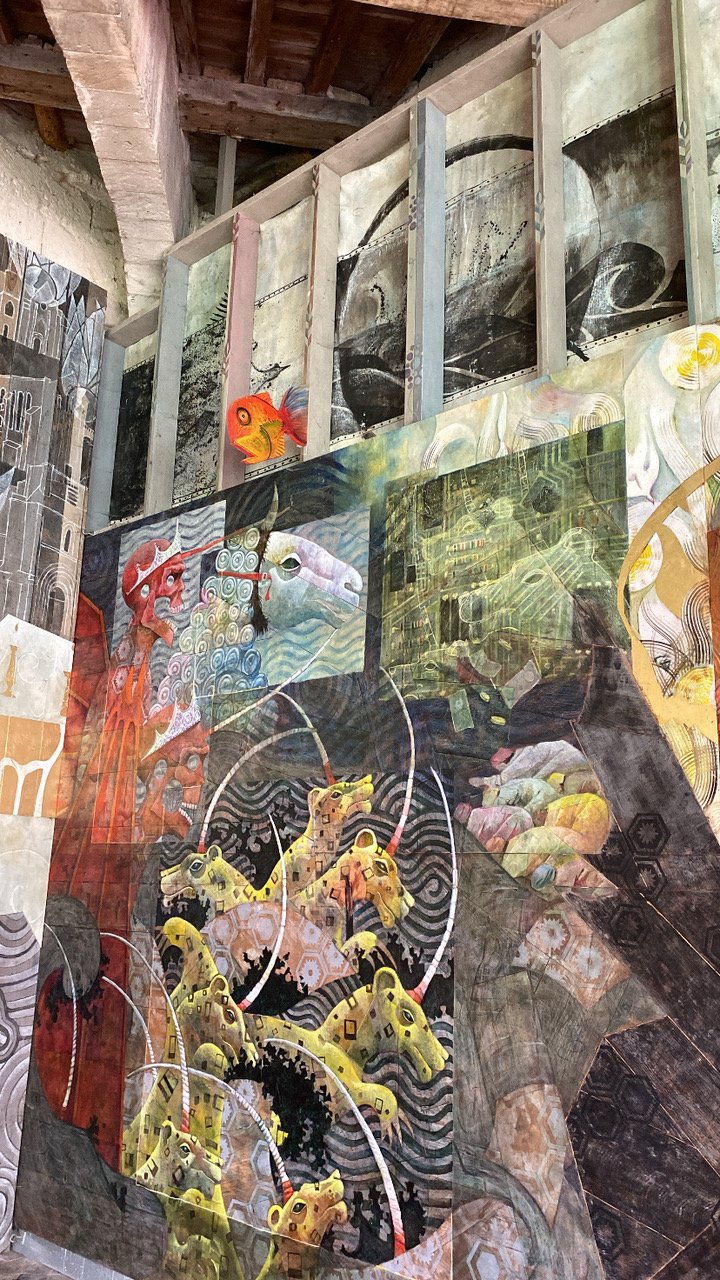Dordogne Redux
Newsletter 09.07.2024
In Bergerac, relaxing, a skill that I have never perfected.
Bienvenue and welcome back to Musée Musings, your idiosyncratic guide to Paris and art. This past week, my cousin Katherine, who lives in Oxford (England, not Mississippi) joined me for a few days in the Dordogne. It was the first time in over 20 years that I have traveled to the Dordogne without worrying (consciously or not) about what was happening (or not) at a 9 bedroom/10 bathroom,18th century farmhouse with a swimming pool alarm that goes off randomly and a septic tank that demands respect.
Katherine took the Eurostar to Paris from London, a trip that was an hour shorter than our journey via TGV from Paris to Libourne the next day (2 vs 3 hours). When we got to the Libourne train station, the agent from the off-site car rental company (Free2Move) was there to meet us. It’s an arrangement I worked out after arriving at the train station a few times and having to scramble to find an Uber (there aren’t many Ubers in Libourne) or a taxi that wasn’t already booked. Marie drove us to the agency where she got out and we drove off. The inconvenience of the rental car agency’s location is offset by the fact that it’s on the road that turns into the road that takes me all the way to Petit Bout, my (still) home in the Dordogne. (Figs A, B)
Figure A. View at dusk from my pigeonner at Petit Bout
Figure B. Kathy’s sketch of same view the next morning
I began renting from Free2Move during the pandemic, when Hertz closed at the Libourne train station and Europcar’s prices increased astronomically. The alternative is to take the TGV from Paris to Bordeaux and rent a car there. The trip is still 3 hours but it’s non-stop. With lots of competition, the cars are cheaper. But then of course, getting out of Bordeaux, with all that traffic and all those confusing traffic signs. And a silent tramway that sneaks up on you without warning. No thank you!
After a good night’s sleep, we were ready to begin our adventure. Katherine wanted to treat me to a meal at a restaurant of my choosing. I wanted to give a restaurant to which I had been very loyal for a very long time but to which I hadn’t been for a while, another chance. I have known this restaurant, Tour des Vents, (Fig 1) since 1989, when my husband and I first happened upon it. It had been a warm day in early July, a gentle breeze was blowing and the sky was a proverbial robin’s egg blue. We sat on the covered terrace overlooking the valley of vines of Monbazillac grapes (Fig 2). I told my husband and our friends from Australia with whom we were enjoying the view and pressions (draft beers) that I wanted to buy a house nearby. And I did, later that week. The house was ours but it remained a ruin for the next decade. That didn’t stop us from returning to the Dordogne annually. And each year, we ate at this restaurant a least a few times during the summer. One summer, when Nicolas was three, I think, we rented a big farmhouse close by, also in the vines. We ate lunch at Tour des Vents at least once a week. Years later, when watercolor painters started coming to the aforementioned farmhouse for workshops, I began organizing lunches for them here. After lunch, the artists would scatter to sketch or paint on an adjoining terrace, overlooking the valley. I witnessed the restaurant transform itself from a simple place with good food and large portions to a posh place with fancy food and small portions.
Figure 1. Tour des Vents next to the wind tower that gave the restaurant its name
Figure 2. View of Monbazillac from Tour des Vents restaurant, Monbazillac
When Katherine and I arrived, the weather was perfect for sitting on the terrace. We selected the 3 course menu: entree, plat, fromage OU dessert. It didn’t take much to convince Katherine that one of us should choose a cheese course and the other a dessert. The meal began even before we ordered when the waiter brought out two sets of tasty amuses bouche. (Figs 3, 4) My starter was a specialty of the region - pressed foie gras de canard. It was a beautifully presented slice with ‘cerise fraîche, fine gelée griotte amaretto’. (Fig 5) The slice was small enough that I ate all of it, even though I knew that three more courses followed. My plat was a strange combination, but it worked - grilled squid with a ‘churros chorizo’ (hot dog), on top of which was a swirling pattern of home made ketchup decorated with tiny leaves and petals that gave it a very festive look. (Fig 6). The cheese trolley (Fig 7) offered 9 different cheeses from all over France. I selected five to try, including a goat cheese with ash and a Comte aged for 18 months. The portions were tiny but I was relieved that we shared it.
Figure 3. Three amuse bouches for each of us - one beef, one herring, one potato
Figure 4. The second amuse bouche, this one a foam with beteraves (beets)
Figure 5. Playfully delicious slice of foie gras de canard
Figure 6. Main course - Grilled Squid with ‘churros chorizo’ - a riff on ’surf and turf'
Figure 7. The Cheese Trolley
Our dessert could have been called, ‘Variations on a Fig.’ (Fig 8) The menu described it as, ‘Figue en sucre soufflé, infusion de feuilles de figuier, compoté de figue rôtie au Banyuls…’ (fig in puffed sugar, fig leaf infusion, roasted fig compote with Banyuls…) It was the right moment and the right way to celebrate figs.
Figure 8. Katherine thinking about cutting into the fig
The food was much better than I remembered it from last time (right before Covid). But the service was just as incomprehensible. The restaurant has employed students from a local culinary school for years. But nobody seems to be teaching them anything. They muddle along making the sort of errors none of us would make at home. Well, maybe I don’t do that much better at home, but then again I don’t have paying customers or a Michelin star.
After lunch, we went to the nearby Chateau de Monbazillac. (Fig 9) Where I also haven’t been for a while and which is nothing like the chateau I knew ‘back in the day.’ When you could just wander around the grounds, which we did often when Nicolas was small and needed to run. He would careen down the hills and back up again, tiring himself out. That was one reason we were there, the other reason, especially on Sundays, when all the shops had been closed since noon, we could pick up a bottle of chilled white or rosé wine at the tasting room.
Figure 9. Chateau de Monbazillac. It’s a playful palace built for pleasure not defense
The chateau back then was a hodgepodge of rooms filled with an assortment of odds and ends associated with local celebrities. There was a room of drawings by George Goursat, known as Sem, a caricaturist of the Belle Epoque now mostly remembered for the menus he created for the famous Parisian restaurant, Maxim’s. (Fig 10) There was a room with furniture owned by Jean Mounet-Sully, (Fig 11) the Belle Epoque actor from Bergerac whose famous roles included Oedipus, Achilles and Hamlet. Another room had models of some of the 1001 chateaux for which the Perigord is celebrated. And another had books by Martin Luther and books about the Reformation, specifically the French Wars of Religion (1562-98) and the St. Bartholomew Day Massacre (Fig 12) when Catholic mobs killed thousands of Huguenots (Protestants), first in Paris and then throughout France. These wars of religion were particularly significant to this chateau since it was owned by a Protestant family. The basement of the chateau had been most peculiar. There was a collection of tools used in viticulture and the harvest and a wall of wine bottles, the wine in them had gone bad but the filled bottles made for a beautiful wall. (Fig 13)
Figure 10. Menu for Maxim’s restaurant by Sen
Figure 11. Bergerac born Belle Époque tragedien, Mounet-Sully
Figure 12. St Bartholomew Day Massacre print, 1572
Figure 13. Wall of Monbazillac wines in basement of Chateau de Monbazillac
How everything has changed! Now you can’t get onto the grounds without a ticket. Now there’s a visitors center as you arrive and a tasting room and gift shop as you depart. And there’s lots of information and it begins immediately, in the visitors’ center, with beautiful multi-media, multi-language displays (Figs 14, 15). The information is about the cultivation of grapes used for Monbazillac wine, a late harvest white wine produced when the ripe grapes are infected with the fungus, botrytis, the ‘noble rot’. The fungus shrivels the grapes which are then hand picked, at hopefully the right time, to produce an intense, honey-colored, sweet wine. Called the poor man’s Sauterne, Monbazillac is frequently served with foie gras. I love to drink it with blue cheese and walnuts or poured into a half melon.
Figure 14. Visitors’ Center, Chateau de Monbazillac
Figure 15. Visitors’ Center, Chateau de Monbazillac
The path through the vines from the Visitor’s Center to the Chateau also has Informational panels, explaining how the vines are pruned and protected from predators, like leaf eating moths. In the past, they planted rose bushes in the vineyards which looked lovely but served an important purpose. Roses fall victim to the same diseases that grape vines do. So, whenever a rose bush got sick, the people in the vineyard knew to take action. Now it’s science and pheromones. (Figs 16, 16a)
Figure 16. Rose bushes at the end of each row of vines to alert the vineyard of disease
Figure 16a. Informational panel in the vines explains how predators are foiled
Inside the Chateau, the history of the family who lived there is told through holograms, magic lanterns and conversations that are happening in rooms as you enter. (Figs 17-19) This being the 21st century, the importance of the women who lived in the Chateau is emphasized. The Wars of Religion is explained more thoroughly and more rigorously. And there was an exhibition by a contemporary artist, too. (Fig 20) After we walked through the chateau, Katherine went outside to sketch. And I walked through the Chateau a second time. And this time I went downstairs. The wall of wine bottles is still there but now the basement is a children’s area with lots of age appropriate panels explaining how to grow grapes for wine! I met up with Katherine in the tasting room where she was tasting and learning about Monbazillac wine. Something the designated driver could not do.
Figure 17. The owner of the Chateau who begins to explain his position in favor of the revolution when you enter room.
Figure 18. Different groups of people appear courtesy of a Magic Lantern to offer their points of view
Figure 19. Shadows of mother and daughter as they discuss daughter’s upcoming marriage
Figure 20. One of paintings by contemporary artist on temporary display
On Saturday, we drove to Bergerac for the marché. (Fig 21) This was the market I fell in love with in 1987. My husband and I were staying at a simple hotel on the square. We had parked our car in front of the hotel, where many other cars were parked. When we left for dinner, the receptionist told us that the car couldn’t stay there overnight. We didn’t understand why until we woke up the next morning and I opened the shutters. The square was filled with stalls at which merchants were selling all manner of things - for cooking and cleaning, sewing and wearing, etc. The people selling fruits and vegetables, cheese and cakes, eggs and truffles (mushroom, not chocolate) were in stalls encircling the church. It was the first of many markets we explored that year and to which we returned year after year.
Figure 21. Bergerac marché, church on the left (every Wednesday & Saturday morning)
Bergerac is no longer the sleepy town it was when I first started coming here. The waterfront has been transformed from a parking lot that ignores the Dordogne River into a lovely space for people to stroll along the river. The whole town has gotten a make over, not one that hides its age, but one that celebrates it. (Figs 22, 23)
Figure 22. Bergerac plage
Figure 23. Wandering around one of Bergerac’s many little streets that go from church to Dordogne River
On Sunday morning, we went to another of my favorite marchés, the one in Issigeac, (Fig 24) a town that is somnolent 6 1/2 days out of 7 and comes alive one morning a week. Unlike Bergerac, Issigeac’s market winds its way around the town, from below the church at one end to the limit of the town at the other. It was drizzling, so we didn’t linger.
Figure 24. Issigeac marché (Sunday mornings)
Hoping the weather would improve as the meteo promised, we drove to Monpazier, the most perfectly preserved bastide in France. Unlike other bastides, the corners of this one are intact, big enough for people but not for carts or cars to pass through. (Figs 25, 26) As we were wandering up from a lavoir (clothes washing area) that we just happened upon (Fig 27), we walked by the hotel Edward 1er. (Fig 28) I remember my husband asking who Edward Ler was. It’s not Edward LER, I told him, it’s Edward the First, Edouard Premier! Katherine had questions about this Edward, too. She asked me if he was the Edward married to Eleonore, of the Eleanor Crosses. The only Eleanor I know is Eleanor of Aquitaine who lived a century before this Edward and who was married to Henry II. I asked her to tell me more about this Eleanor, Eleanor of Castile. She was the beloved wife of Edward 1er. To honor her when she died, Edward had 12 ‘Eleanor crosses,’ erected, one at each place her funeral cortège stopped on its way to Westminster Abbey for her burial. Of the twelve, three remain, Geddington, Northampton and Waltham.(Fig 29).
Figure 25. The bastide at Monpazier
Figure 26. All the corners have been preserved at Monpazier bastide
Figure 27. Where the women in Monpazier came to wash their sheets
Figure 27a. An explanation of the lavoir with an old photo
Figure 28. Hotel Edward 1er, Monpazier
Figure 28a. The sign outside the Edward LER, I mean 1er
Figure 29. The three remaining Eleanor Crosses, Waltham, Geddington, Northampton
On our last day in the Dordogne, the train from Libourne to Paris left at 4:30 p.m. giving us time to visit one more place - St. Emilion, a 10 minute drive from the car rental agency. I wasn’t worried about the drive but I was worried about the parking. Turns out, Katherine has great parking karma which neutralized my bad parking karma. We found a space right away. Near the church with the simple, peaceful cloister. (Fig 30) This time, along one wall, there was a contemporary mural illustrating St John’s Book of the Apocalypse. It’s a beautiful work with powerful images. (Figs 31, 32)
Figure 30. Cloitre des Cordeliiers, St. Emilioon
Figure 31. Contemporary mural (completed in 2018), Cloister des Cordeliers, St. Emilion
Figure 32. Contemporary mural (completed in 2018), Cloister des Cordeliers, St. Emilion
We went to lunch at a place I knew, the Cloître des Cordeliers whose name comes from the Franciscan friars who lived there, specifically the cords, (cordelier) that kept their cloaks fastened. The cloister and adjoining church have gone through many iterations. In the present one, it’s a commercial space filled with vendors selling all sorts of products. Katherine felt that it had a Money Lenders in the Temple vibe. I like it because you can buy a simple picnic lunch, presented to you in a panier (basket) that you can eat in the cloister’s beautiful and comfortable garden . (Fig 33)
Figure 33. Katherine preparing our picnic lunch in garden of Cloitre des Cordeliers
After lunch, we walked up and down the steep streets, admiring the views at the summit (Fig 34) I have been to St. Emilion lots of times, most often wearing sandals and walking around cautiously and hesitantly. This time, with my big blue Hokas on my feet, (Fig 35) going up and down the cobblestone hills didn’t bother me a bit! Bodes well for my upcoming Camino walk. Gros bisous, Dr. B.
Figure 34. Katherine admiring the view of St Emilion from the top
Figure 35. My big blue Hokas, I don’t go anywhere without them now!
Bonus: Kathy’s sketch of Eymet






